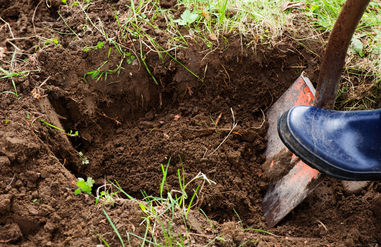- Published on
Backyard burial

In Alaska, generally speaking, it is perfectly ok to bury an animal companion on your own property.
Selecting a specific grave site:
- Think ahead to any future renovations or other construction projects so that the site you choose will remain undisturbed
- Avoid sites where mature tree roots might be extensively disturbed
- Make sure your neighborhood doesn’t have any restrictions about this (the Municipality of Anchorage and State of Alaska do not)
- Especially if your animal was euthanized, select a site at least 100 feet from open water sources
Burying an animal:
- How deep to dig depends on the size of your departed animal companion. The goal is to have 18-24” of soil on top (of their body or casket). Digging to a depth of 4 feet will be more than enough in most cases. **any soil mounded above-ground counts toward this 18-24” recommendation**
- Animals can be buried without any shrouding or external container. The choice to use any of these items is mostly a personal one though gently maneuvering large animals is exponentially easier if they’re at least shrouded.
A note about creating ritual and meaning:
Every family is different and every pet is different, so I can’t give you a script for your graveside service. Some ideas might include reading a poem or singing a song, or simply sharing favorite stories with others present. The actual physical work of grave digging and burial can – by itself – be a deeply transcendent and meaningful act. When in doubt, a consultation with a death doula or funeral celebrant can be helpful.
Burial in winter:
It is not impossible to hand-dig a grave with frozen ground, but it is exponentially more time-consuming. The degree of difficulty is going to depend on the amount of snow cover (more snow may mean less frozen soil) and the moisture content of the soils (wetter soils means more ice).
- Heat – use a propane torch, or a burn barrel or fire pit to warm and loosen the soil
- Tools – shovels are just the start, a pickaxe, mattock, or other tool may be needed to break through the soil
- Considering temporary storage – there’s nothing wrong with waiting for warmer temperatures. If burial is important to you, know that decomposition doesn’t occur in freezing temperatures.
No matter what you choose, what matters most is honoring the bond you shared in a way that feels right for you.
Further reading: Alaska’s Department of Environmental Health has a one-page document detailing the proper handling of animal remains.